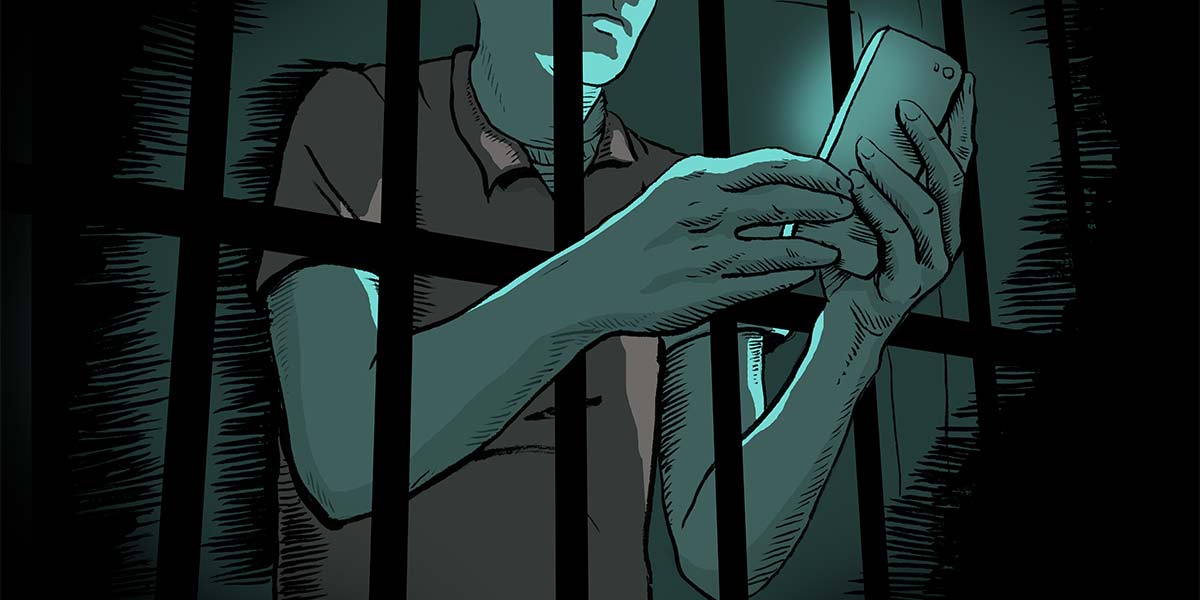Ola Bini, the software developer acquitted last year of cybercrime charges in a unanimous verdict in Ecuador, was back in court last week in Quito as prosecutors, using the same evidence that helped clear him, asked an appeals court to overturn the decision with bogus allegations of unauthorized access of a telecommunications system.
Armed with a grainy image of a telnet session—which the lower court already ruled was not proof of criminal activity—and testimony of an expert witness to the lower court—who never had access to the devices and systems involved in the alleged intrusion—prosecutors presented the theory that, by connecting to a router, Bini made partial unauthorized access in an attempt to break into a system provided by Ecuador’s national telecommunications company (CNT) to a presidency's contingency center.
If this all sounds familiar, that’s because it is. In an unfounded criminal case plagued by irregularities, delays, and due process violations, Ecuadorian prosecutors have for the last five years sought to prove Bini violated the law by allegedly accessing an information system without authorization.
Bini, who resides in Ecuador, was arrested at the Quito airport in 2019 without being told why. He first learned about the charges from a TV news report depicting him as a criminal trying to destabilize the country. He spent 70 days in jail and cannot leave Ecuador or use his bank accounts.
Bini prevailed in a trial last year before a three-judge panel. The core evidence the Prosecutor’s Office and CNT’s lawyer presented to support the accusation of unauthorized access to a computer, telematic, or telecommunications system was a printed image of a telnet session allegedly taken from Bini’s mobile phone.
The image shows the user requesting a telnet connection to an open server using their computer’s command line. The open server warns that unauthorized access is prohibited and asks for a username. No username is entered. The connection then times out and closes. Rather than demonstrating that Bini intruded into the Ecuadorean telephone network system, it shows the trail of someone who paid a visit to a publicly accessible server—and then politely obeyed the server's warnings about usage and access.
Bini’s acquittal was a major victory for him and the work of security researchers. By assessing the evidence presented, the court concluded that both the Prosecutor’s Office and CNT failed to demonstrate a crime had occurred. There was no evidence that unauthorized access had ever happened, nor anything to sustain the malicious intent that article 234 of Ecuador’s Penal Code requires to characterize the offense of unauthorized access.
The court emphasized the necessity of proper evidence to prove that an alleged computer crime occurred and found that the image of a telnet session presented in Bini’s case is not fit for this purpose. The court explained that graphical representations, which can be altered, do not constitute evidence of cybercrime since an image cannot verify whether the commands illustrated in it were actually executed. Building on technical experts' testimonies, the court said that what does not emerge, or what can't be verified from digital forensics, is not proper digital evidence.
Prosecutors appealed the verdict and are back in court using the same image that didn’t prove any crime was committed. At the March 26 hearing, prosecutors said their expert witness’s analysis of the telnet image shows there was connectivity to the router. The witness compared it to entering the yard of someone’s property to see if the gate to the property is open or closed. Entering the yard is analogous to connecting to the router, the witness said.
Actually, no. Our interpretation of the image, which was leaked to the media before Bini’s trial, is that it’s the internet equivalent of seeing an open gate, walking up to it, seeing a “NO TRESPASSING” sign, and walking away. If this image could prove anything it is that no unauthorized access happened.
Yet, no expert analysis was conducted in the systems allegedly affected. The expert witness’s testimony was based on his analysis of a CNT report—he didn’t have access to the CNT router to verify its configuration. He didn’t digitally validate whether what was shown in the report actually happened and he was never asked to verify the existence of an IP address owned or managed by CNT.
That’s not the only problem with the appeal proceedings. Deciding the appeal is a panel of three judges, two of whom ruled to keep Bini in detention after his arrest in 2019 because there were allegedly sufficient elements to establish a suspicion against him. The detention was later considered illegal and arbitrary because of a lack of such elements. Bini filed a lawsuit against the Ecuadorian state, including the two judges, for violating his rights. Bini’s defense team has sought to remove these two judges from the appeals case, but his requests were denied.
The appeals court panel is expected to issue a final ruling in the coming days.












